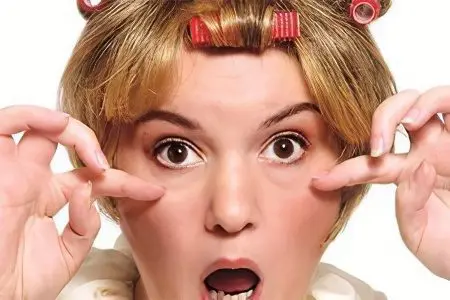Contents
Facial swelling – this is a pathological condition caused by the retention of excess fluid in the tissues of the face (in the intercellular space), resulting in a violation of water metabolism and a noticeable swelling of the maxillofacial region.
Edema is not a disease – only a symptom of an ailment. For effective treatment of facial edema, first of all, it is necessary to determine its cause, and then decide whether it is possible to cope with the problem on your own or whether medical assistance is required. At the same time, swelling of the face can also appear in an absolutely healthy person due to any circumstances.
Why does the face swell?

The accumulation of excess fluid in the body, resulting in edema, can occur for various reasons. If, in addition to edema, shortness of breath is observed, this is probably a malfunction of the heart. Also, with swelling of the face caused by heart problems, the liver is noticeably enlarged. In the event that the face has acquired a bluish tint, the matter is in violation of the work of the circulatory organs.
If the largest area of swelling is under the eyes, then it can be assumed that the problem lies in the kidneys. As a rule, such edema appears in the morning. The face increases, and then the eyelids, especially the lower ones. At the same time, the edemas are watery and soft, they can be moved. Also, with renal edema, the skin takes on a yellowish-bronze tint. In those people who suffer from chronic kidney disease, there is often a rapid weight gain before edema, which is due to internal edema.
If there is a focus of infection in the area of the paranasal sinuses, this can also cause swelling. In this case, the outflow of lymph is difficult, but as the inflammation decreases, the edema also disappears. People with diabetes often suffer from such edema, because in this group of people the body’s resistance to infections is reduced.
Those suffering from chronic diseases of the respiratory tract or paranasal sinuses may also experience swelling of the face. Here you should not try to cope with the edema on your own, especially applying cold compresses to the nose area. Edema will be eliminated only by the treatment of diseases and their regular prevention.
Edema is also caused by endocrine diseases. As a rule, in this case, a strong swelling of the skin and subcutaneous tissue appears on the face, in which mucous tissue accumulates. The tissues do not have enough thyroid hormones, and the person needs hormone therapy, which is prescribed by a doctor.
In summer, people often experience swelling of the face due to sunburn. To avoid them, you need to either cover the most sensitive areas of the face – the nose and cheeks, or use protective equipment. If the burn does occur, then to avoid swelling, immediately make cold compresses, if possible with soothing herbs, or use a special cream. In no case should you lubricate burns with oil.
There are other causes of swelling of the face:
malignant or benign tumors in the face and jaw;
infections in the maxillofacial region;
reaction to a blood transfusion;
high blood pressure;
fluid retention in the body during pregnancy, especially in the first phases and during toxicosis;
the beginning of the menstrual cycle;
diseases of the genitourinary system;
malfunctions of the immune system and lack of vitamins and minerals;
eating low-quality products;
excessive salt intake;
unbalanced diet or fasting;
obesity;
overwork;
lack of sleep, etc.
Allergy as a cause of swelling of the face

If the cause of edema is an allergic reaction, such edema is called angioedema. In addition to swelling, difficulty breathing, hives, reddening of the skin, itching, or even loss of consciousness can speak of allergies. As a rule, the soft tissues of the face swell – lips, eyelids (the eyes become “slit-like”), the tissues on the back of the hand may also increase and acquire a pink tint. To relieve such edema, you can use an antiallergic ointment sold in a pharmacy. It is also necessary to take an antihistamine drug – a tablet “Suprastin”.
The peculiarity of allergic edema on the face is that it can last from 5 minutes to a couple of hours, and then disappear without a trace. Allergies can be chronic, laid down even before birth, or appear suddenly, and be caused by drugs, especially antibiotics, chemicals used in everyday life, specific foods, insect bites (one of the most dangerous are wasp stings), inhalation dust, animal hair or plant pollen. Increasingly, there are cases of allergies caused by stressful situations.
With Quincke’s edema, swelling of the face may also occur. Such edema develops quickly and suddenly. Along with the accumulation of fluid in the subcutaneous fatty tissue and mucous membranes, veins and capillaries expand. It should be borne in mind that this is a dangerous syndrome, and there is a possibility of suffocation, since edema can also affect the pharynx. In this case, an injection of an antihistamine (Suprastin) is made and immediately seek medical help. If a person once had Quincke’s edema, there is a high probability that this can happen again when faced with an allergen.
Sometimes self-identification of the allergen is not possible, and for this you should consult a doctor to undergo a series of tests. Often situations arise when a person has a reaction to several groups of allergens at once, or over time, the list of contraindications is replenished. It is better for such people to always have antihistamines with them.
In case of allergic swelling of the face, compresses, washing with cold water and other external agents (in addition to special ointments) are ineffective. To clean the skin or wipe it with lotions in such cases is strictly contraindicated. With allergic edema, they cope either with the help of medicines, or it goes away on its own. You should also try not to touch your face with your hands, do not rub it.
Swelling of the face after tooth extraction

Tooth extraction is a minor surgical operation, i.e. interference with the natural functioning of the body. This can cause complications and side effects, especially if the person’s immunity is weakened. The destruction of the soft tissues surrounding the tooth, in itself, entails traumatic edema of the gums and cheeks, and if the removal operation was difficult (wisdom teeth, tooth extraction in parts), then edema is almost inevitable. At the same time, swelling cannot be called a complication, and in most cases it does not pose a threat to the health and life of the patient.
You need to worry if the edema is accompanied by severe pain, fever, signs of intoxication, and does not go away for a long time. In this case, we can assume the development of inflammation in the wound. This may be due to a violation by the doctor of the rules for the antiseptic treatment of damaged tissues or non-compliance by the patient with the instructions of the dentist. Also, inflammation can occur if the tooth is not completely removed, or if there is a focus of infection in the wound, which was hidden under the tooth. Sometimes the cause of swelling of the cheek is an allergic reaction of the patient to anesthetics or other drugs.
If there are signs of inflammation, it is necessary to examine the wound and find out the general condition of the patient. The wound, as a rule, is carefully treated with an antiseptic or antibiotic solution, if necessary, purulent formations or fragments of the tooth are removed. After surgical cleansing of the wound, treatment is prescribed, which may include stimulation of the immune system so that the body can quickly cope with the disease.
A great danger to health is presented by symptoms after tooth extraction, such as shortness of breath and wheezing. In this case, we can talk about allergic edema of the respiratory tract, which requires the prompt help of resuscitators, otherwise suffocation may occur.
Physiological swelling of the cheek after tooth extraction does not require treatment – only preventive actions. To reduce swelling, it is recommended to apply cold to the affected area immediately after the operation, and after a few hours – something warm and dry (heated salt or cereal). In order not to get frostbite or burns, you need to apply objects to your face through a cloth. Soreness of the cheek can persist for about two weeks, if the pain syndrome does not go away, you should consult a doctor for re-sanitization of the wound.
Swelling after facial surgery

Edema of facial tissues after surgery is a natural phenomenon, and it can be avoided in rare cases. It should be noted that, due to age or individual characteristics of the organism and immunity, people tolerate operations differently. In one patient, the edema after surgery is barely noticeable, while in another person in a similar situation, the edema is pronounced and does not go away for a long time.
Usually, the largest edema appears on the second or third day after the operation, and then gradually subsides. After a week, the swelling should be less, and after two weeks it should be completely gone. Of course, you can speed up the process of tissue regeneration and removal of excess fluid from them if you follow the recommendations of specialists.
Surgeons do not advise taking a bath or a hot shower in the first two weeks, they especially do not recommend going to the sauna and overheating in the sun. It is better to limit yourself to a contrast shower and wash your face with cool water. In the first two days, it is advisable to make cold compresses from herbal decoctions or apply cabbage leaves to problem areas. The face is not wiped with any chemical agents and decorative cosmetics are not used.
Physical activity and overvoltage should be excluded, more rest. Leaning over, thereby providing a rush of fluid to the head, is also not advised. If possible, you should keep your eyes closed as often as possible and try to blink less often. It is not advisable to work at a computer for a long time or read a lot – this causes the muscles of the face to experience unnecessary tension. The sleep pattern should be optimal – you need to get enough sleep. At the same time, it is recommended to sleep on a high pillow, in a well-ventilated area.
At the same time, much depends on the drinking regimen and diet. Alcohol consumption is contraindicated, salty, spicy, fried and smoked foods should be reduced to a minimum. Water should drink about two liters a day, but do not drink coffee and carbonated drinks.
If the swelling does not go away within two weeks, you should contact your surgeon or other specialist. Even despite the knowledge of their physiological characteristics, it is dangerous to self-medicate and hope that everything will go away by itself.
Swelling on the face after a blow

Swelling on the face after a blow is also an absolutely normal phenomenon, and appears due to tissue damage and bursting blood vessels. Edema is accompanied by a change in skin color – from red to blue or purple, and then the edema subsides and the bruised area turns yellow. Usually such edema disappears gradually, and after a couple of weeks they do not leave a trace. However, if first aid is provided to a person immediately after the impact, the edema will pass much faster and more painlessly.
Most often, edema appears under the eyes – due to a blow directly to the eye area, or to the bridge of the nose. In this case, it is necessary to make sure that the eye itself is not damaged and the bone is not broken – for this, an examination by a specialist is desirable. And, making sure that only the outer tissues are damaged, various methods can be used to relieve puffiness.
The most common and effective method is to apply something very cold to the impact site, preferably ice or a frozen product. You can use metal objects, especially cold ones, for example, put a coin or a spoon in the freezer for a couple of minutes, and then attach it to the edema. This must be done as soon as possible, and held at the site of injury for at least 10 minutes. After that, it is recommended to make cool compresses, using herbal decoctions for them – wormwood, plantain, yarrow, St. John’s wort, heather.
Since childhood, a familiar way to reduce pain and speed up healing is to attach a plantain leaf to the bruised area. The cabbage leaf also works. Cabbage perfectly removes puffiness, as if drawing out excess fluid from the tissues. The pain syndrome after using cabbage leaves also becomes less noticeable, redness of the skin disappears.
Of the folk remedies that help with bruises, it is possible to distinguish bodyaga – a freshwater sponge sold in pharmacies in the form of a powder or gel. The bandage with bodyaga is kept on the face until it dries. A mixture of analgin with iodine also helps. The tablets are finely crushed, a few drops of iodine are added and the resulting mass is applied to the bruise.
The pharmacy also sells a lot of products that allow you to quickly get rid of edema – these are various ointments based on extracts from plants or synthetic drugs with analgesic effects. For swelling of the face after bruises, Troxevasin, Lyoton-gel or Dolobene-gel are used.
Swelling on the face after the blows should not be touched with your hands or trying to massage – it can be even worse. The use of physiotherapy is possible only with the permission of the attending physician, and in later stages.
Swollen face after drinking

Perhaps the most common cause of swelling of the face among the inhabitants of Russia is night gatherings while drinking alcoholic beverages. Accordingly, the more was drunk and the less time left for sleep, the more likely it is to see a noticeably enlarged face and small “slits” instead of eyes in the mirror in the morning. It should be noted that with age, the chances of meeting such an unpleasant phenomenon seriously increase.
The most noticeable swelling after drinking alcohol in the first hours after waking up, but if just at that time there is an important meeting or you need to go to work, urgent measures must be taken. Usually they use folk remedies, the most effective of which is cold compresses. The easiest way is to moisten a towel with cold water and put it on your face, or wash your face with cool water for 10 minutes.
You can prepare to solve such a problem in advance, and stock up, for example, with ice cubes, so that in the morning, wrapping them in a towel, apply to your face. Here you need to be careful, because the largest area of edema will be on the eyelids, and ice should not be applied to the eyes – this can adversely affect the health of the eyes. If blood vessels are cracked in the eyes, then cold compresses will not help – you need to use anti-inflammatory drops.
You can also prepare an herbal infusion in the evening, and put it in the refrigerator to moisten a napkin in it in the morning and make a compress. For these purposes, suitable herbs such as chamomile, mint, horsetail, St. John’s wort, lingonberry leaves. Chilled black or green tea helps some (also in the form of compresses or as a cleanser).
Most often, swelling on the face appears after drinking a large amount of beer with a very salty snack. Therefore, if important things are coming up the next day, it is better to reduce the use of both. And, going to bed, you need to try to lie on the pillow face up, but if you sleep “on the face”, then the “crumpled” look in the morning is provided.
Taking any means inside to remove swelling from the face is almost useless. But for some, drinking a cup of warm green tea with milk helps. It is advisable to refuse hot drinks and dishes like soup – steam falling on the face will only increase swelling. Salty foods immediately after lifting should also not be consumed – they will retain fluid, as a result of which the edema will not subside longer.
Together with compresses or masks, you can do a light facial massage, paying special attention to the area around the eyes. With such a massage, it will also be useful to use essential oil (add 2-3 drops to a spoonful of base vegetable oil), which has a calming effect. Do not rub your face, use scrubs and lotions. A hot bath will not do any good either, the best option is a contrast shower, after which not only the appearance will improve, but also the general condition.
Swelling of the face in the morning

Nutritionists believe that if a healthy person’s face swells in the morning, the reason must be sought in his diet. As a rule, edema occurs in those people who do not care about their health and do not adhere to the principles of a healthy diet, or in those who periodically violate them due to circumstances. Contributes to the retention of excess fluid in the tissues eaten salt. If you reduce its amount in the daily diet, the edema may soon disappear. It is also not recommended to often eat canned foods, spicy, smoked dishes. At the same time, the volume of pure water drunk per day should be at least two liters.
Also, in the morning, the face of those who like to eat before going to bed or even in the middle of the night swells. You need to eat 3-4 hours before bedtime, and it is advisable not to eat “heavy” food – fatty, fried, animal products, with the exception of low-fat milk and kefir. You should also not drink before bedtime, and in order to avoid thirst, it is advisable to reduce salt intake in the afternoon.
Often notice swelling on the face of the so-called owls – people who go to bed late. And if in youth a person, as a rule, looks quite fresh after a sleepless night, then in adulthood, traces of overwork or an incorrect regimen are visible on the face. Doctors advise going to bed before midnight, preferably no later than 10 pm, then in the morning the person will look rested and feel accordingly.
In the event that swelling in the morning becomes chronic, you should seriously think about the health of the internal organs. Often, edema occurs due to disorders in the functioning of the kidneys or the cardiovascular system. In this case, edema may be accompanied by a change in complexion, shortness of breath or other unpleasant symptoms, often painful. In this case, a full examination of all body systems and a course of treatment can help.
How to remove swelling from the face?

If the swelling of the face is not chronic and is the result of malnutrition, bruising, allergies, it will pass quite quickly, and you can speed up the process with folk remedies or simple actions. If the edema does not go away for a long time or appears periodically, you can visually reduce it by the same means, but you can get rid of it only by identifying and treating the disease that caused the edema.
Here are some methods to relieve swelling:
diuretic: tablets or infusion of herbs bear ears (the fastest and most effective way, if the cause is not a bruise and not an allergic reaction);
antihistamines (“Suprastin”, “Tavegil”). In this case, it is better not to swallow the tablets, but to put them under the tongue;
gels that relieve swelling (“Troxevasin”, “Lioton-gel”, “Dolobene-gel” and others);
decoction of bay leaf. Take 3 times a day for a tablespoon (3 sheets per glass of boiling water). After a week, the swelling should go away;
decoction of dandelion root. Brew it in a ratio of 1:5, take it twice a day – after waking up and before going to bed;
reducing salt intake to at least 3 grams per day, but it is advisable to give up salty foods completely for a while;
normalization of the water balance in the body – it is necessary to drink enough plain water every day. The average norm for an adult is up to two liters per day;
refusal to use smoked and canned food, mayonnaise, ketchup, as well as carbonated drinks, alcohol and coffee;
exclusion of meals and liquids before bedtime (the last meal should be at least 3 hours before bedtime);
the inclusion in the diet of more foods containing fiber – vegetables, fruits;
regular cleaning of the kidneys;
cold and hot shower;
cold compresses, or rubbing the skin with ice cubes;
washing with decoctions of medicinal plants – chamomile, mint, linden, lingonberry leaves;
using a high pillow for sleeping. This will ensure the outflow of fluid from the face;
anti-edema masks.
Face edema mask

The following masks will help improve blood circulation in the face and help excess fluid come out:
Potato. To prepare it, potatoes are boiled in their skins, and kneaded with a fork, after which the resulting “mashed potatoes” are warmly applied to the face for 15 minutes. This mask is considered the most effective. But, if there is not enough time for boiling, you can also use raw potatoes – they cut it into circles and keep it on swollen areas of the face until the potato warms up. You can grate raw potatoes, squeeze the juice out of it and use it for compresses.
Dill and sour cream. A few sprigs of fresh dill are finely chopped (you should get about 1 teaspoon of greens) and mixed with 2 tablespoons of chilled sour cream. Keep such a mask on your face for about 10-15 minutes, or until the sour cream warms up. The mask is washed off with cool water.
Parsley Root Mask. Fresh parsley root is scrolled through a meat grinder or rubbed on a fine grater. The slurry is applied to problem areas (it can also be used on the eyelids), after 20 minutes it is washed off with lukewarm water. After such a mask, a face cream is not required.
Cucumber. Fresh cucumber (preferably from the refrigerator) is rubbed on a coarse grater, and the resulting slurry is applied to the face. Keep this mask for about 20 minutes. This mask will also moisturize the skin, give it a fresh look, which will greatly help with swelling caused by the abuse of alcoholic beverages.
Tea. It is necessary to brew black or green tea to make a strong infusion. After it cools down, moisten a napkin or gauze in it and apply it to your face. As soon as the compress warms up, it needs to be moistened again. You can also put used tea bags on your eyes, however, the quality of tea leaves in tea bags is noticeably worse.
Herbal infusions. Sage, chamomile or birch buds are brewed (preferably in a water bath). The infusion is filtered and allowed to cool. Apply to the face according to the same principle as in the previous recipe.
Essential oil. In one tablespoon of vegetable oil (olive, sesame, soy), you need to dilute two drops of juniper, geranium and rosemary essential oils. Apply the resulting mixture on the face and make a light massage (if the facial tissues are not injured). To remove the mask, use a soft cloth or cotton swabs.
Buckwheat mask. Buckwheat is ground in a coffee grinder, then it must be placed in a cloth bag and dipped in boiling water for 2 minutes. After the contents have cooled, apply the bag to your face for 15 minutes.
Cognac mask. Usually such a mask is used to relieve swelling after parties. It consists of: a teaspoon of cognac or vodka, egg yolk, half a teaspoon of lemon, 5 drops of vegetable oil, half a spoon of green tea. You can add a little anti-edema gel, it is sold at any pharmacy. Keep the mask on your face for about 15 minutes, then rinse it off and wipe your face with chilled green tea or an ice cube.
The choice of funds that will help get rid of edema directly depends on the cause of fluid retention. In the event that regular and prolonged swelling of the face is observed, which is difficult to remove, it is necessary to consult a doctor and check the functioning of internal organs and systems. Usually, after a course of treatment and restoration of body functions, the problem disappears.
Seek emergency medical attention if swelling of the face is accompanied by difficulty breathing and coughing, a feeling of tightness in the throat, an itchy mouth, a rash or hives, a sudden change in complexion (cyanosis, yellowing, pallor), redness of the eyes, their bulging or feeling of pain.









